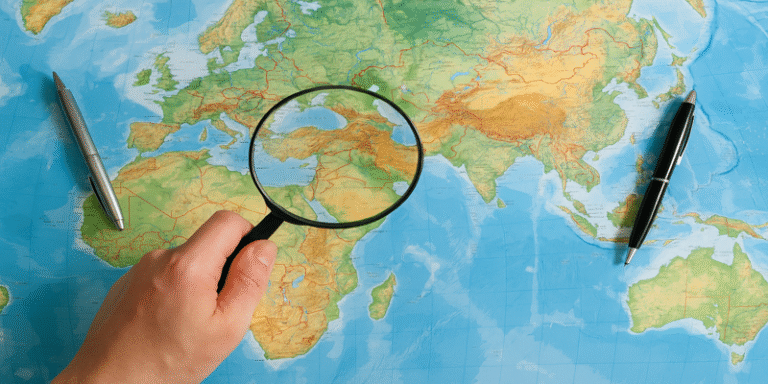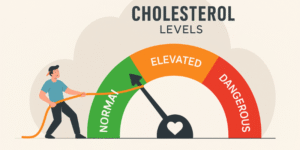Geography is a dynamic and integrative discipline that examines the relationships between people, places, and environments. It bridges the natural sciences and the social sciences, offering a comprehensive perspective on spatial phenomena and processes. This article provides an overview of the core study topics within the field of geography, including physical geography, human geography, environmental geography, and geospatial technologies. Drawing on academic literature, textbooks, and global case studies, the article showcases how geography contributes to understanding today’s most pressing issues—from climate change to urban planning.
1.0 Physical Geography: Earth’s Natural Systems
Physical geography is the branch of geography concerned with the natural environment. It studies Earth’s landscapes, weather systems, ecosystems, and geological formations. Core topics include geomorphology, climatology, hydrology, and biogeography.
Geographers in this domain examine how natural processes shape the Earth’s surface. For instance, the study of fluvial systems helps explain the development of river valleys and floodplains, which are vital for agriculture and human settlement (Strahler & Archibold, 2011). Similarly, climatology explores atmospheric processes, contributing to improved weather forecasting and understanding of climate change.
Moreover, glaciology has grown in relevance due to melting polar ice caps and rising sea levels. Physical geographers employ remote sensing and geospatial analysis to monitor these changes over time, offering insights into the consequences of global warming (Christopherson et al., 2020).
2.0 Human Geography: People and Places
Human geography focuses on the spatial aspects of human existence, such as population patterns, urban development, culture, and economics. Key topics include migration, urbanisation, globalisation, and cultural landscapes.
This subfield explores how human activities shape and are shaped by geographical space. Urban geographers, for example, study patterns of land use and social segregation in cities, informing public policy and housing strategies. Cultural geographers analyse how identity, language, and religion vary across space and influence the human experience (Knox & Marston, 2016).
Geographers also investigate economic geography, which examines the location of industries, trade networks, and global markets. In today’s interconnected world, understanding these spatial patterns helps explain inequalities between regions and the economic forces behind them (Coe et al., 2013).
3.0 Environmental Geography: Humans and the Biosphere
Sitting at the interface between physical and human geography, environmental geography examines how humans interact with the natural environment. It studies sustainability, resource management, and environmental degradation.
Geographers in this field address critical issues such as deforestation, desertification, and pollution, helping to inform sustainable development practices. According to Hajarian (2025), environmental geography plays a central role in evaluating urban livability and smart city planning, particularly in developing countries.
Environmental geographers also assess ecosystem services and the socio-economic impacts of natural hazards like floods, earthquakes, and wildfires. The integration of Geographic Information Systems (GIS) into environmental planning enables authorities to map risk zones, monitor ecological health, and design resilient infrastructure.
4.0 Geospatial Technologies: Tools of the Trade
Modern geography is increasingly shaped by technological innovation. Tools such as Geographic Information Systems (GIS), remote sensing, and global positioning systems (GPS) have transformed how geographers collect, analyse, and visualise spatial data.
GIS allows researchers to layer multiple datasets to analyse complex patterns—for instance, linking income levels with healthcare access or environmental risk. Jamini and Hosainabadi (2025) highlighted how GIS was used to identify flood-prone rural settlements in Iran’s Hawraman region, showcasing the role of geospatial technologies in disaster preparedness.
Remote sensing, using satellite imagery, is essential for tracking changes in land use, monitoring urban sprawl, and detecting environmental degradation. These tools are also vital for climate science, agriculture, and transportation planning.
5.0 Cartography and Spatial Thinking
Cartography—the art and science of map-making—remains fundamental to geography. Beyond aesthetics, maps are analytical tools that support spatial reasoning. Modern cartography includes digital maps, interactive dashboards, and story maps, which combine narrative and geospatial data for public communication and education.
Spatial thinking is not just academic; it is a 21st-century skill. Understanding proximity, distribution, scale, and region is essential in fields such as epidemiology, logistics, military strategy, and environmental planning (Gersmehl, 2014).
6.0 Geography in Education and Curriculum
Geography education plays a crucial role in fostering global citizenship, critical thinking, and spatial literacy. It teaches students to think systemically about connections between humans and their environments.
The UK’s geography curriculum, for example, includes topics ranging from weather systems and rivers to migration and development studies (Department for Education, 2013). Emphasis is placed on fieldwork, enabling students to collect data firsthand and apply geographical methods in real-world contexts.
Higher education in geography offers opportunities to specialise in diverse areas such as urban planning, environmental management, and geospatial intelligence—skills that are increasingly in demand across sectors.
7.0 Applied Geography: Addressing Real-World Challenges
Geography’s strength lies in its applicability. Geographers work in public policy, humanitarian aid, urban development, conservation, and more. Their spatial expertise is essential in tackling problems like:
- Climate adaptation and resilience in vulnerable communities
- Urban inequality and access to green space
- Resource allocation and land-use conflicts
- Disaster risk reduction and emergency planning
In recent years, geographers have contributed to mapping COVID-19 transmission, planning renewable energy sites, and designing sustainable transport systems (Miller & Goodchild, 2015).
Geography is far more than the study of maps or capital cities—it is a dynamic discipline that explains how the world works spatially and environmentally. Its core study topics—physical geography, human geography, environmental geography, and geospatial technology—equip learners and professionals with the tools to understand and shape a rapidly changing world.
As we confront global challenges like climate change, urbanisation, and resource scarcity, the insights provided by geography are more valuable than ever. Whether in policymaking, environmental conservation, or technological innovation, geographers are at the forefront of building a more informed and sustainable future.
References
Christopherson, R.W., Birkeland, G.H., & Byrne, M.-L. (2020). Geosystems: An Introduction to Physical Geography. 10th ed. Pearson.
Coe, N.M., Kelly, P.F., & Yeung, H.W. (2013). Economic Geography: A Contemporary Introduction. 2nd ed. Wiley-Blackwell.
Department for Education. (2013). National curriculum in England: geography programmes of study. GOV.UK. [Available at: https://www.gov.uk/government/publications/national-curriculum-in-england-geography-programmes-of-study].
Gersmehl, P. (2014). Teaching Geography. 2nd ed. Guilford Press.
Hajarian, A. (2025). Spatial Analysis of the Relationship between Smart Cities and Urban Livability (Case Study: Neighborhoods of Isfahan). Geography and Environmental Sustainability. [Available at: https://ges.razi.ac.ir/article_3460_en.html].
Jamini, D. & Shabani Hosainabadi, A. (2025). Identifying rural settlements at risk of flooding in the Cultural Landscape of Hawraman. Village and Space Studies. [Available at: https://vssd.birjand.ac.ir/article_3468_en.html].
Knox, P.L. & Marston, S.A. (2016). Human Geography: Places and Regions in Global Context. 7th ed. Pearson.
Miller, H.J. & Goodchild, M.F. (2015). Data-driven geography. GeoJournal, 80(4), pp.449–461.
Strahler, A.N. & Archibold, O.W. (2011). Physical Geography: Science and Systems of the Human Environment. 3rd ed. Wiley.









